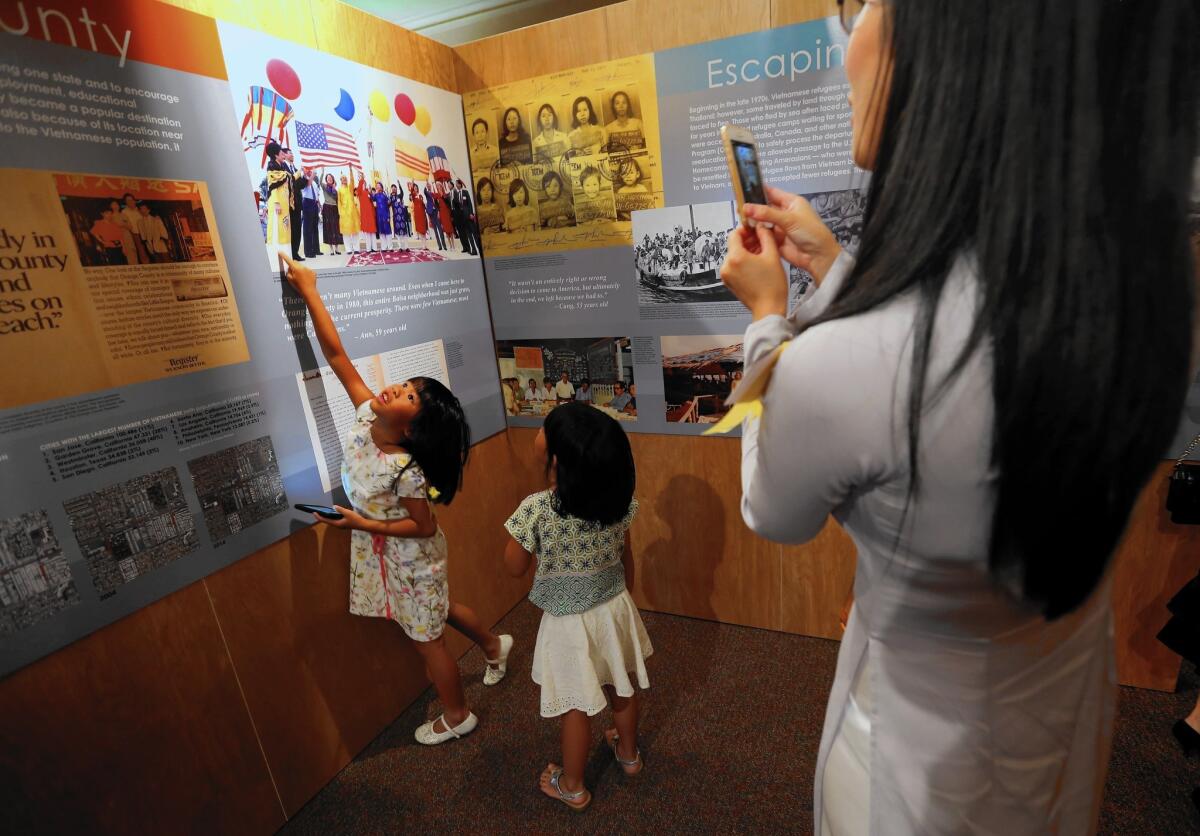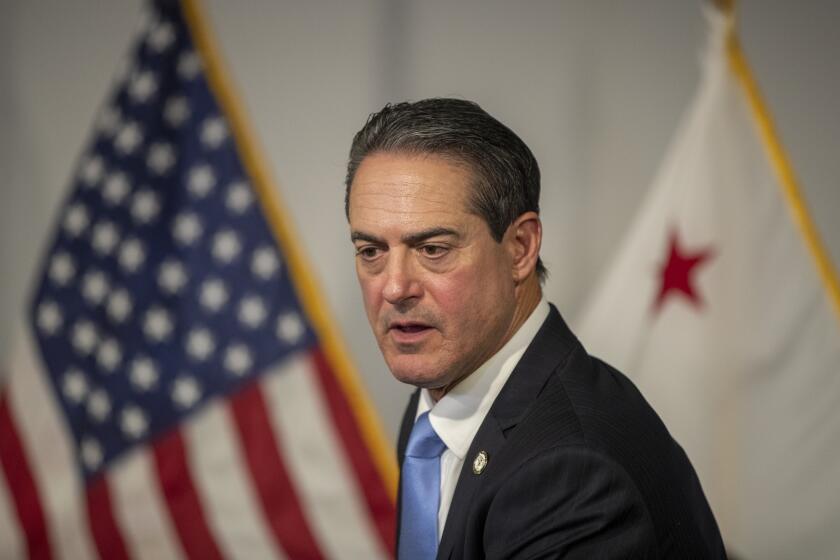40 years after Saigon’s fall, O.C. exhibit tells Vietnamese Americans’ stories

- Share via
Sandra Hoang traveled all the way from Philadelphia to see the show.
She was among hundreds of Vietnamese Americans who turned out Saturday for the opening of a special exhibit in Santa Ana called Vietnamese Focus: Generations of Stories, which uses photographs, videos, art and other materials to tell the story of the Vietnamese community’s 40-year history in Orange County. Thousands of Vietnamese refugees settled in the county after the fall of Saigon in 1975.
“Where I am, we don’t have access to this information,” Hoang said. “There’s no collection. That’s why it’s a thrill for me to see this. This is tearful and joyful history as it evolved.”
The exhibit at Santa Ana’s Old Orange County Courthouse took eight months to assemble -- with UC Irvine co-curators Linda Vo and Tram Le, working with Thuy Vo-Dang of the university’s Southeast Asian Archive, combing through thousands of photographs. Orange County is home to the largest Vietnamese community, more than 200,000, outside of Vietnam.
The show is divided into three parts: individual histories highlighted on panels, oral histories and art installations. In the middle of the gallery, “mourning” headbands hung from the ceiling, each depicting the face of a missing person who escaped Vietnam. The exhibit is sponsored by OC Parks and UC Irvine’s Vietnamese American Oral History Project.
Artist Trinh Mai created the haunting wisps of faces on white voile. She said she was inspired after reading stacks of letters at the Southeast Asian Archive from people desperately searching for their loved ones.
“These are real people and their souls deserve to live on,” she said.
Daniel Jones of Westminster, who grew up near Little Saigon, said his mother, a manicurist, worked around the clock and did not have time to share her experiences in a way that could help him understand his family’s saga.
“These displays are our guides,” said Jones, 22, who is half white, one-fourth Vietnamese and one-fourth African American. “Young people like me often have no other way of clicking with the past.”
A montage of who’s who in the community — representing medicine, fashion, film, social work, business and the arts — greeted nearly 500 visitors, detailing population, immigration patterns and lives transformed.
Orange County Supervisor Andrew Do welcomed the crowd, showing them a blue Pan American Airways travel bag given to his family before they fled their homeland in April 1975, at the end of the war.
“Whatever we could fit in two of these bags, we could take to a destination unknown,” he said. “And we had an hour to decide what were the most important things in our lives.” Do’s father ordered his children to wear two layers of clothes. He also packed French and English dictionaries.
“We are full-fledged Americans, yet we cannot keep moving forward if we ignore the early steps,” said Kim Pham, a graphic artist who grew up in Lawndale.
Chris Tran, of Orange, directed his daughters to an image of his father, the late Nhut Van Tran, a former South Vietnamese Army general who was awarded the U.S. Legion of Merit for his bravery directing the defense of An Loc, a provincial capital. He wanted his children to understand their grandfather’s dedication.
“For me, pictures made it more real,” said his 12-year-old daughter, Jackie.
“It’s not like we came over here and have the lives these kids have now,” Chris Tran said. “What better way to celebrate our history than here?”
Many of the non-Vietnamese in the gathering said the exhibit made a lasting impression.
“It’s the stories and the trials of overcoming,” says Susanne Apitz, who traveled from the Arizona town of Portal. She grew up in Fullerton and finished high school in the late ‘70s, a time when hundreds of refugees began to pour into area schools. “But I never knew these sagas. No one talked about it.”
“It’s so important to absorb,” said her brother, Marcus Apitz. “This is part of our history too.”
Twitter: @newsterrier
More to Read
Get the Latinx Files newsletter
Stories that capture the multitudes within the American Latinx community.
You may occasionally receive promotional content from the Los Angeles Times.







